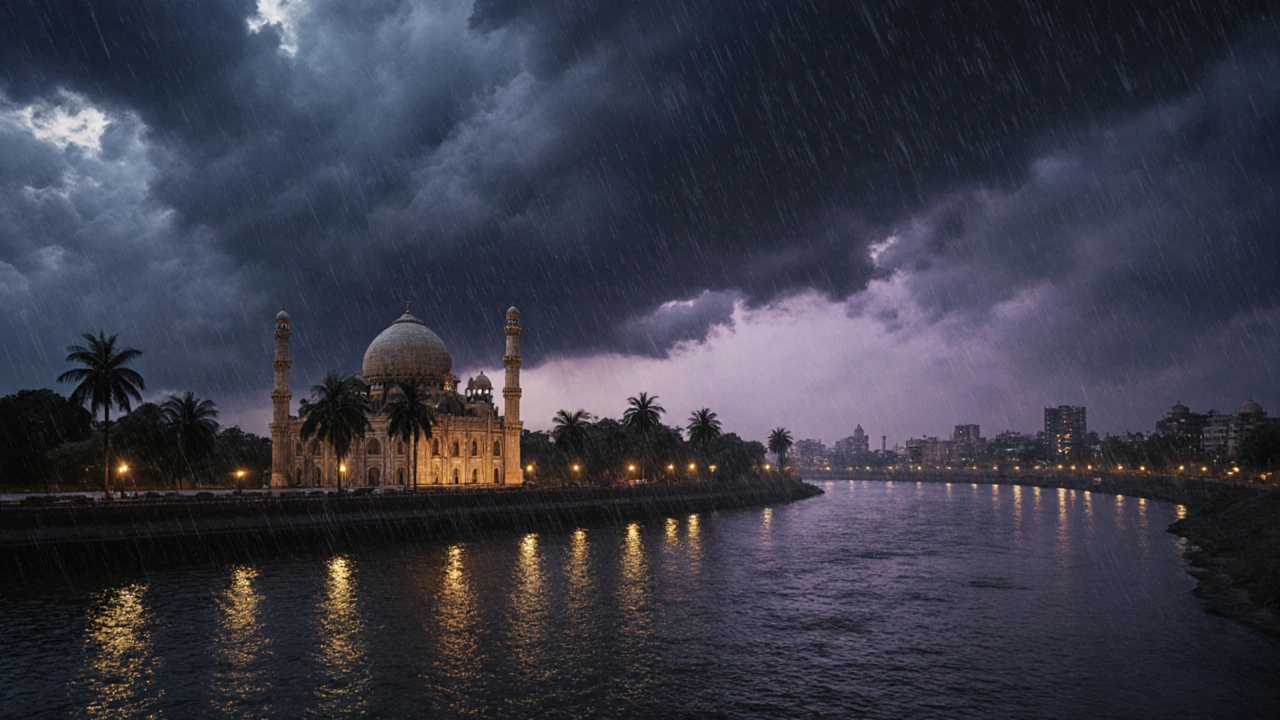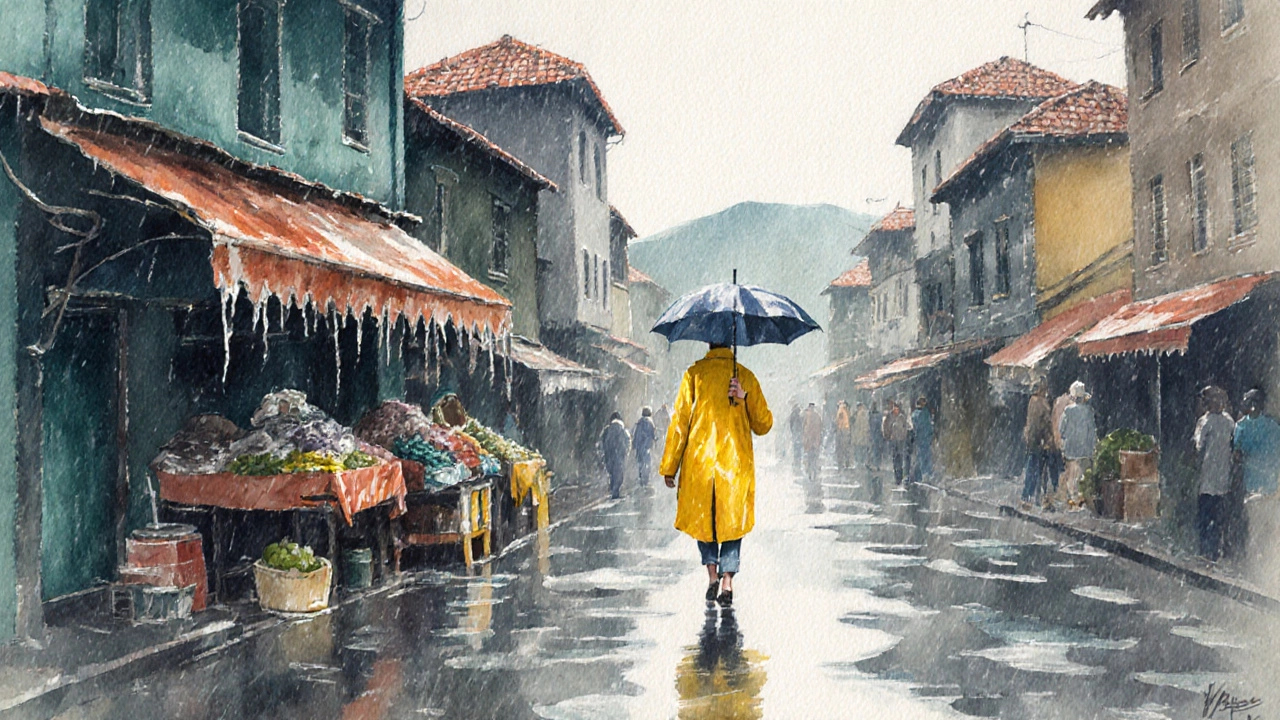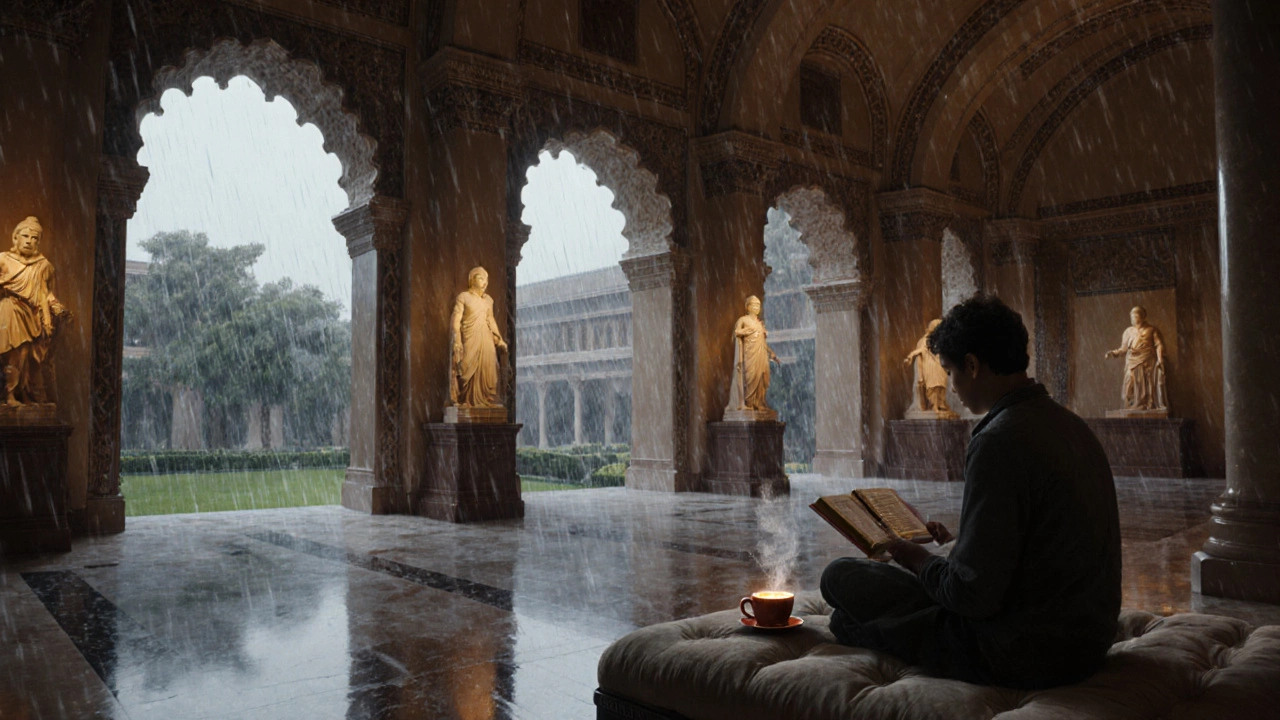Discover the Wettest Month in India for North India Travel

- Oct, 22 2025
- 0 Comments
- Aaron Blackwood
North India Monsoon Rainfall Calculator
Calculate Your North India Monsoon Rainfall
Find out the average rainfall for your destination during monsoon season.
Quick Takeaways
- The monsoon peaks across most of North India in July, with August close behind.
- Delhi records an average of 190 mm of rain in July, making it the wettest month for the capital.
- The absolute wettest spot in the country is Mawsynram, Meghalaya, where June‑July sees over 11,000 mm.
- Heavy rains can affect road travel, but they also bring vibrant festivals and lush landscapes.
- Plan pack‑light, carry waterproof gear, and schedule flexible itineraries for a smooth monsoon adventure.
What is the Monsoon in India?
The Indian monsoon is a seasonal wind system that brings heavy rainfall to the subcontinent, typically from June to September. It is driven by temperature differences between the Indian Ocean and the landmass, creating a low‑pressure zone that pulls moist air inland. The monsoon isn’t a single uniform event; it varies widely between the Western Ghats, the Himalayas, and the Indo‑Gangetic plain.
How Rain Falls Across Different Indian Regions
India is divided into four main rainfall zones:
- Southwest monsoon zone - covers the Western Ghats, Kerala, and the southwest coast. This area gets the earliest rains, often in early June.
- Northwest rain shadow zone - the arid lands of Rajasthan and parts of Gujarat see the least rain.
- Central plateau zone - includes Madhya Pradesh and Chhattisgarh, receiving moderate showers.
- Himalayan foothill zone - the Himalayan states and the Indo‑Gangetic plain, where rains are more concentrated in July-August.
Understanding these zones helps travelers predict when and where the wettest conditions will appear.

The Wettest Month in North India
When you ask, "Which is the wettest month India for a north‑India trip?" the answer points to July. Across major north‑Indian cities, July records the highest average precipitation.
Here’s a snapshot of average rainfall (in millimetres) for a few key destinations:
| City | June | July | August | September |
|---|---|---|---|---|
| Delhi | 78 | 190 | 163 | 68 |
| Amritsar | 82 | 162 | 143 | 70 |
| Jaipur | 50 | 120 | 106 | 45 |
| Dehradun | 97 | 240 | 210 | 80 |
Delhi’s 190 mm in July is the highest among the capital cities, while the hill station of Dehradun tops the list with 240 mm, reflecting the combined effect of the monsoon and the Himalayan foothills.
Record‑Breaking Rainfall: Mawsynram and Cherrapunji
Even though they’re far from north India, it’s worth mentioning the two villages that hold the world record for rainfall, because they set the benchmark for what “wet” really means.
Mawsynram, located in Meghalaya’s East Khasi Hills, receives an average of 11,872 mm per year. Most of that pours down in June and July, with the single‑month peak often exceeding 5,000 mm.
Just 20 km away, Cherrapunji follows closely with about 11,777 mm annually. These places sit on the windward side of the Khasi Hills, causing the monsoon clouds to release their moisture instantly.
While these spots are too far for a typical north‑India itinerary, they illustrate why July is the decisive month for heavy rains across the subcontinent.

How Monsoon Affects North Indian Travel
Rainy days can be a mixed bag for tourists. On the plus side, the landscapes turn emerald, waterfalls swell, and festivals like Kumbh Mela (when it falls in August) pulse with life. On the downside, water‑logged roads, occasional landslides in hilly areas, and flight delays are common.
Key things to watch:
- Road conditions: National highways around Delhi and Punjab stay open, but secondary roads in Uttarakhand and Himachal Pradesh can be blocked after heavy downpours.
- Train schedules: Indian Railways usually runs on time, but landslides may force temporary halts in the hill zones.
- Airport operations: Delhi’s Indira Gandhi Airport occasionally experiences weather‑related diversions, especially in late July.
Staying flexible, checking local weather apps, and having a backup plan (like a museum visit or a tea‑house stop) can keep the trip enjoyable.
Planning Your North India Trip Around the Wettest Month
If you love lush scenery and don’t mind occasional showers, July can be magical. Here’s a quick checklist for a smooth experience:
- Pack smart: Waterproof backpack, quick‑dry clothing, sturdy sandals, and a compact umbrella.
- Choose the right destinations: Cities like Delhi, Agra, and Jaipur are well‑connected and handle rain well. For nature lovers, head to the foothills of Dehradun or the tea gardens of Darjeeling (though technically in the east).
- Book flexible accommodations: Look for hotels with rain‑proof verandas and rooms on higher floors to avoid flood‑prone ground levels.
- Plan indoor activities: Museums (e.g., National Museum, Delhi), heritage forts with covered courtyards, and culinary tours.
- Keep an eye on weather alerts: The Indian Meteorological Department releases daily forecasts; their website and mobile app are reliable.
For travelers who prefer dry weather, the shoulder months of May (pre‑monsoon) and September (post‑monsoon) offer milder temperatures and fewer crowds, while still retaining some greenery.
Frequently Asked Questions
What is the wettest month in North India?
July is generally the wettest month across most north‑Indian cities, with Delhi receiving around 190 mm of rain on average.
Can I travel to the Himalayas in July?
Yes, but be prepared for sudden showers and occasional landslides. Stick to well‑maintained routes, carry waterproof gear, and check local alerts from the Indian Meteorological Department.
How does monsoon affect popular festivals?
Many festivals, like Kumbh Mela (when it falls in August) and Rath Yatra in Puri, actually thrive during the monsoon, drawing crowds who enjoy the cooler temperatures and vibrant atmosphere.
Is it safe to drive in north India during heavy rains?
Major highways remain safe, but traffic can slow down. In hilly regions, avoid narrow mountain roads after intense downpours and follow local advice.
What are the best indoor activities when it rains?
Visit museums (e.g., National Museum in Delhi), explore historic forts with covered galleries, join cooking classes, or enjoy a traditional tea‑house experience in the hill stations.